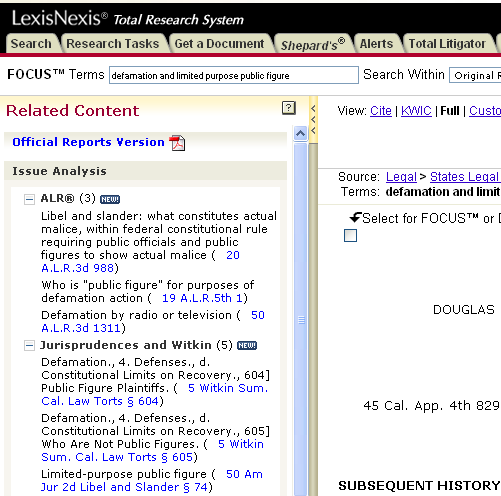The CM Law Library blog points out that LexisNexis has just released its “Related Content” feature, which appears to be the competitor to Westlaw’s “Results Plus.” When you access a case in LexisNexis, you will see the “Related Content” pane on the left side of the screen. (Related Content only appears when you are actually within a case, not at the Results screen like with Results Plus.) Related Content will provide you with links to materials such as ALR, legal encyclopedias, law reviews and other secondary sources that relate to the issues discussed in the case you have selected.
The CM Law Library blog notes that Related Content is reviewed by human editors, whereas Westlaw’s Results Plus is done by computers. I find that quite interesting since Westlaw’s Topics, Key Numbers and headnotes are done by human editors, while Lexis’ headnotes are primarily generated by computers.
Update: Michael Morton, our LexisNexis Regional account manager recently contacted me about this blog post, saying Lexis had taken issue with my last statement about Lexis headnotes being primarily generated by computers. My comment was mainly focused on the generation of the topics and subtopics, not the generation of the headnote text which I know is taken straight from the case. Michael told me that the generation of the topics and subtopics is not done by computers, but by human editors. This is not what I had been told previously by LexisNexis. I was told that the creation and assignment of the topics and subtopics was done by computers and then checked briefly by editors. Michael apologized that I had been misinformed, but said that the topics and subtopics are and have always been created and assigned by real people, not computers.


